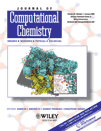
JOURNAL OF COMPUTATIONAL CHEMISTRY
metrics 2024
Driving Discovery Through Computational Excellence
Introduction
The Journal of Computational Chemistry, published by Wiley, is a premier platform in the fields of computational chemistry and computational mathematics. Established in 1980 and continuing through 2024, this journal serves as an essential resource for researchers, professionals, and students seeking to advance their understanding and application of computational methods in chemical research. With a commendable impact factor and ranking in the top quartile (Q2) for both Chemistry and Computational Mathematics, it boasts impressive Scopus rankings—22nd out of 189 in Computational Mathematics and 102nd out of 408 in General Chemistry, indicating its strong influence within these scientific communities. While it does not offer open access, the Journal of Computational Chemistry remains a vital venue for disseminating groundbreaking research and fostering collaboration in the computational science landscape. For those at the forefront of innovation, staying abreast of the latest findings published here is indispensable for advancing their work in theoretical and applied chemistry.
Metrics 2024
 0.74
0.74 3.40
3.40 3.70
3.70 208
208Metrics History
Rank 2024
Scopus
IF (Web Of Science)
JCI (Web Of Science)
Quartile History
Similar Journals

PROGRESS IN REACTION KINETICS AND MECHANISM
Decoding the Dynamics of Chemical ReactionsProgress in Reaction Kinetics and Mechanism is a distinguished academic journal published by SAGE Publications Ltd, focusing on the intricate dynamics of reaction kinetics and mechanisms within the field of Physical and Theoretical Chemistry. With an ISSN of 1468-6783 and an E-ISSN of 1471-406X, this journal serves as a critical platform for researchers and practitioners seeking to explore and disseminate cutting-edge findings from 1999 to 2024. Although currently not categorized as Open Access, the journal maintains a competitive profile with a Q4 categorization in its field, showcasing its commitment to fostering scientific dialogue and inquiry. The journal ranks #140 out of 189 in its category, reflecting its integral role in advancing knowledge and understanding in chemistry. Scholars, professionals, and students who aim to stay at the forefront of research in reaction kinetics will find valuable insights and findings in this esteemed publication.
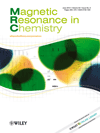
MAGNETIC RESONANCE IN CHEMISTRY
Transforming Research with Cutting-Edge Magnetic Resonance StudiesMAGNETIC RESONANCE IN CHEMISTRY, published by Wiley, is a prominent journal dedicated to the advancement of knowledge in the field of magnetic resonance as applied to chemistry and materials science. With an ISSN of 0749-1581 and an E-ISSN of 1097-458X, this journal has been an essential resource for researchers since its inception in 1985, maintaining its reputation as a leading publication through its converged years up to 2024. Spanning diverse topics, the journal holds a Q2 quartile ranking in both the Chemistry (miscellaneous) and Materials Science (miscellaneous) categories, illustrating its significance in the academic community. With Scopus rankings placing it in the 61st percentile for General Chemistry and the 55th percentile for General Materials Science, this journal is an esteemed platform for original research, reviews, and critical discussions surrounding magnetic resonance methodologies and applications. As access options are not open, it ensures a curated dissemination of high-quality, peer-reviewed content to support professionals, researchers, and students in their scholarly endeavors.
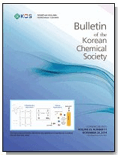
BULLETIN OF THE KOREAN CHEMICAL SOCIETY
Bridging foundational and emerging topics in chemistry.BULLETIN OF THE KOREAN CHEMICAL SOCIETY, published by WILEY-V C H VERLAG GMBH, is a prominent journal in the field of chemistry, with a specific emphasis on miscellaneous chemical research. With an ISSN of 0253-2964 and E-ISSN 1229-5949, this journal serves as a pivotal platform for researchers, professionals, and students who are eager to showcase innovative studies that address both foundational and emerging topics in the discipline. Boasting a commendable Q2 ranking in the 2023 chemistry quartiles, the journal ranks within the top 50th percentile in Scopus, reflecting its commitment to high-quality scientific discourse. The content published within its pages from 1996 to 2024 covers a vast array of subjects, ensuring a multidisciplinary approach to chemical research. The journal’s impact in the academic community is underscored by its accessibility to a global audience, making it an essential resource for those wishing to stay at the forefront of chemical advancements.

CHEMICAL PHYSICS LETTERS
Fostering Collaboration in the World of Chemical PhysicsCHEMICAL PHYSICS LETTERS, published by Elsevier, is a prestigious journal that has been at the forefront of advancing knowledge in the fields of physical and theoretical chemistry and physics since its inception in 1967. With an impressive impact factor reflective of its high-quality research output, this journal holds Q2 quartile rankings in both the Physical and Theoretical Chemistry and Physics and Astronomy categories for 2023. It is recognized as a key platform for disseminating groundbreaking findings, with Scopus rankings placing it within the top 76th and 66th percentiles in its respective categories. Researchers and professionals benefit from its insightful contributions and rigorous peer-review process, making it an essential resource for those engaged in cutting-edge chemical physics studies. Although the journal is not open access, it remains accessible through various institutional subscriptions, ensuring that a wide audience can explore its wealth of knowledge. Located in Amsterdam, Netherlands, the journal continues to drive innovation and collaboration across diverse scientific disciplines.
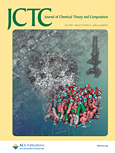
Journal of Chemical Theory and Computation
Pioneering Insights in Chemical ComputationThe Journal of Chemical Theory and Computation, published by the American Chemical Society, stands at the forefront of the multidisciplinary fields of computational chemistry and computer science applications. With an impressive impact factor and ranking in the top quartile (Q1) in both Physical and Theoretical Chemistry and Computer Science Applications, this journal serves as a vital platform for researchers and professionals seeking to publish cutting-edge research on computational methodologies and innovative theoretical approaches. Spanning from 2005 to 2024, the journal aims to disseminate high-quality studies that advance understanding of molecular systems and the development of computational techniques. Its esteemed reputation is reflected in its robust metrics, ranking #23 in Physical and Theoretical Chemistry and #101 in Computer Science Applications by Scopus, showcasing its significant influence in the academic community. While it does not currently offer open access, the journal remains accessible to a wide audience, making it an essential resource for those engaged in the evolving landscape of chemical theory and computation.
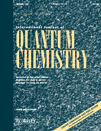
INTERNATIONAL JOURNAL OF QUANTUM CHEMISTRY
Fostering Breakthroughs in Quantum Chemical ScienceInternational Journal of Quantum Chemistry is a distinguished scholarly publication that has been at the forefront of advancements in the realm of quantum chemistry since its inception in 1967. Published by Wiley in the United States, this journal holds a significant place in the academic community, currently indexed in the Q3 quartile across various categories including Atomic and Molecular Physics, Condensed Matter Physics, and Physical and Theoretical Chemistry. With an ISSN of 0020-7608 and an E-ISSN of 1097-461X, the journal offers a platform for researchers and professionals to disseminate cutting-edge findings in quantum chemical research. While it operates under a traditional subscription model, the journal remains committed to enhancing the visibility of its contributions within the scientific community. With a convergence of research that spans from 1967 to 2024, the International Journal of Quantum Chemistry is pivotal for anyone looking to advance their understanding and application of quantum principles in chemistry, providing valuable insights into the microscopic interactions that govern matter and its properties.

Wiley Interdisciplinary Reviews-Computational Molecular Science
Fostering Innovation at the Intersection of Science and ComputationWiley Interdisciplinary Reviews: Computational Molecular Science is a premier journal published by WILEY, dedicated to the intersection of computational techniques and molecular science. Boasting an impressive impact factor and consistently ranking in the Q1 category across several key disciplines including Biochemistry, Computational Mathematics, Computer Science Applications, Materials Chemistry, and Physical and Theoretical Chemistry, this journal plays a crucial role in disseminating high-quality research that bridges multiple fields. With its focus on providing a platform for interdisciplinary dialogue and innovative computational solutions, it serves as an essential resource for researchers, professionals, and students eager to push the boundaries of molecular science. While the journal does not currently offer open access, it remains a vital conduit for scholarly communication, fostering advancements in understanding molecular interactions through computational methods. The journal is based in the United States, contributing to its global outreach and impact in the scientific community.
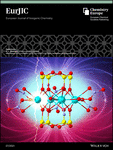
EUROPEAN JOURNAL OF INORGANIC CHEMISTRY
Championing Impactful Studies in Inorganic ScienceThe EUROPEAN JOURNAL OF INORGANIC CHEMISTRY, published by WILEY-V C H VERLAG GMBH, is a premier peer-reviewed journal dedicated to advancing the field of inorganic chemistry. With an ISSN of 1434-1948 and an E-ISSN of 1099-0682, this journal has established itself as a key platform for the dissemination of innovative research, reviews, and features since its inception. As of 2023, it holds a respectable Q2 quartile ranking in the domain of inorganic chemistry, reflecting its influence and contribution to the scientific community—ranking #33 out of 79 in Scopus’ assessment and placing the journal in the 58th percentile. The journal encompasses a wide range of topics within inorganic chemistry, making it a valuable resource for researchers, professionals, and students alike. Although the journal does not currently offer open access, it remains an essential outlet for high-quality, impactful studies in inorganic chemistry, showcasing significant advancements and fostering collaboration among scholars globally.

STRUCTURAL CHEMISTRY
Pioneering Insights into Chemical FrameworksSTRUCTURAL CHEMISTRY is a premier journal published by SPRINGER/PLENUM PUBLISHERS, dedicated to advancing the study and understanding of the structural aspects of chemistry. With an ISSN of 1040-0400 and an E-ISSN of 1572-9001, this journal serves as a critical resource for researchers and professionals engaged in the fields of Condensed Matter Physics and Physical and Theoretical Chemistry. Since its inception in 1990, it has become an essential platform for disseminating high-quality research, featuring articles that explore innovative methodologies, experimental techniques, and theoretical frameworks. As evidenced by its Scopus rankings, including #192 in Condensed Matter Physics and #101 in Physical and Theoretical Chemistry, the journal occupies a respected position within the academic community, promoting interdisciplinary collaboration and insight. While it operates on a traditional subscription model, the journal continues to broaden its reach to foster knowledge exchange among scholars worldwide. With a commitment to excellence and relevance, STRUCTURAL CHEMISTRY remains a vital contributor to the scientific dialogue surrounding chemical structure and its myriad implications across various scientific disciplines.

Advanced Theory and Simulations
Unveiling New Frontiers in Interdisciplinary Research.Advanced Theory and Simulations, published by WILEY-V C H VERLAG GMBH in Germany, stands at the forefront of interdisciplinary research in the realms of modeling, simulation, numerical analysis, and statistics. With a commendable impact factor reflected through its esteemed rankings—Q2 in Modeling and Simulation, Q1 in Multidisciplinary, Q2 in Numerical Analysis, and Q2 in Statistics and Probability—this journal is essential for academia and industry professionals alike who aim to deepen their knowledge and innovate within these dynamic fields. The journal has achieved notable Scopus rankings, with a 91st percentile in Mathematics: Statistics and Probability, emphasizing its critical role in advancing scholarly communication. Since its inception in 2018, Advanced Theory and Simulations has provided an open platform for researchers to share their findings and foster collaborative developments. Although it currently does not operate an open access model, the journal's commitment to rigorous peer review and quality ensures that published work remains highly reputable and impactful. This makes it a vital source of contemporary research for those engaged in theoretical and applied sciences, encompassing a broad range of applications and methodologies.